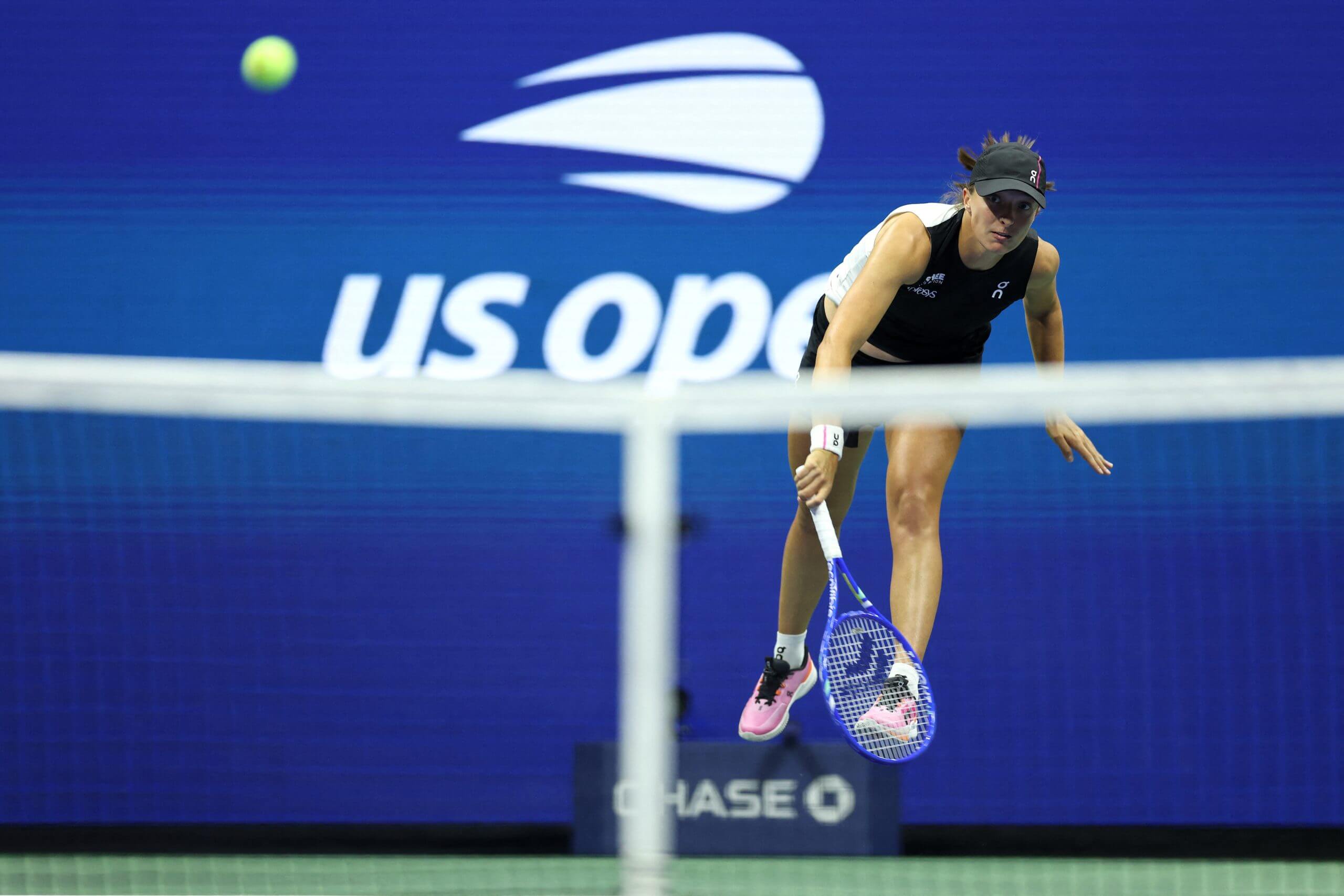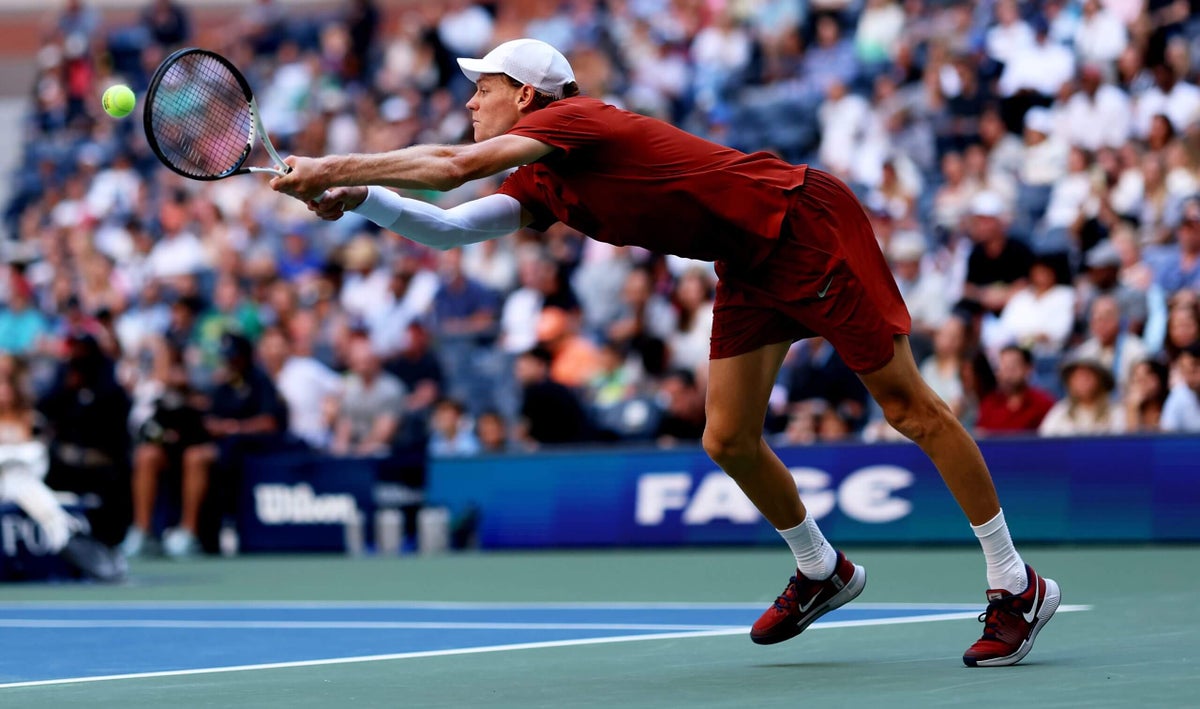The Athletic has live coverage of the U.S. Open 2025.
FLUSHING MEADOWS, N.Y. — For a couple of hours Saturday afternoon, even the unflappable Jannik Sinner looked as though he was about to enter a long line of reigning U.S. Open champions to be thwarted. Denis Shapovalov, the firecracker Canadian, had Sinner down 0-3 in the third set with a point for 0-4. But Sinner, as he so often does, recognized that there was a lot of tennis to play and asked Shapovalov if he could play it, too. Sinner prevailed, 5-7, 6-4, 6-3, 6-3.
In an era of men’s tennis in which one or possibly two players have tended to lock up each individual major, the U.S. Open stands apart. Not since 2008 has a man successfully defended the title here, when Roger Federer won the last of his five U.S. Opens. All of the other majors have been successfully defended far more recently — either this year or last year, by Sinner or Carlos Alcaraz.
Since 2008, Novak Djokovic has gone on winning streaks of three in a row at the Australian Open (twice) and four in a row at Wimbledon. Rafael Nadal went on runs of five in a row and four in a row at Roland Garros. And Djokovic, who might have been expected to dominate here like he did in Melbourne and in London at his peak, has never managed to do so.
Sunday night in New York he recalled his 2012 title defense being disrupted when a tornado warning saw his semifinal against David Ferrer abandoned for the day, with spectators sent home. A shoulder injury ended his title defense in 2019; in 2020 he was defaulted for striking a line judge with a ball, and in 2021 he was overwhelmed by the emotion of being one match away from tennis’ holy grail: the calendar Grand Slam.
Daniil Medvedev, once — and still — a pantomime villain in New York known for taunting the crowd, embraced the chaos to beat Djokovic in that final.
The last 11 editions of the U.S. Open men’s singles tournament have included eight different winners. Three of them lifted their only major title here. In the same period, there have been five winners at the Australian Open and Wimbledon, and four at the French Open.
All of which sets up the week ahead as the clash between the player who typifies calm and control and the venue that exudes chaos. Sinner, who is also the world No. 1 and who has won the last three hard-court Grand Slams, takes on a player with the opposite temperament, the mercurial and unpredictable No. 23 seed Alexander Bublik, on Monday at the Billie Jean King National Tennis Center.
Tennis can overindex on these kinds of statistics, searching for a unifying theory of chaos where one does not exist. But at the U.S. Open, several players said that what feels like randomness and unpredictability actually has its roots in the very time and place of the tournament.
Madison Keys, who was so fresh when she won the Australian Open in January, admitted that she allowed bad habits to return during her first-round defeat to Renata Zarazúa because she did not have the energy to stop them. Every four years, the Olympics takes place just before the U.S. Open, leaving players even more emotionally and physically exhausted coming into the year’s final major. Witness Djokovic and Alcaraz both bombing out early last year, after their emotional gold medal match a few weeks earlier.
Alexander Zverev, who reached his first Grand Slam final here in 2020, only to lose to Dominic Thiem, who lifted the only major title of his career, said its place in the schedule was “the biggest reason” for the U.S. Open’s unpredictability.
“If you look at the Masters events, the most unpredictable tournament is Paris Bercy, the last Masters event of the year,” Zverev said, before the No. 3 seed exited this year’s event at the third-round stage to Felix Auger-Aliassime, who had previously never beaten a top-five player at a major.
The last player to successfully defend the men’s singles title at the U.S. Open before Federer was Pat Rafter. The Australian won his two Grand Slam titles in New York, in 1997 and 1998. His strategy was to embrace the madness and let other players fall apart amid distractions and uncertainty.
“I was always one of those people that liked it when other people were uncomfortable, because I knew I had an advantage,” he said in a video interview last week. “I’d sit there and know they’re not enjoying this. It’s too loud, or the smells of the hot dogs are p—ing them off. Or the planes going overhead and the wind. The people talking through points.”
Bublik, who thrives on chaos of his own creation on the court and that of the crowd off it, will tap into that dynamic against the metronomic Sinner.
Naomi Osaka, the only multiple women’s winner from the last 11 editions, joked on Saturday that New York brings out her best behavior, rather than irritation. This year in New York, various players have had run-ins with each other and with umpires, among them Medvedev, Stefanos Tsitsipas and Jelena Ostapenko.
Jessica Pegula, last year’s beaten finalist, referenced this ahead of the tournament. “We have seen a lot of those stories over the years on the men’s and women’s side where the crowd gets behind somebody, or like Medvedev when he flipped the crowd that one year (2019),” she said. “There are so many storylines I think of the crowd kind of taking people and carrying them through in whatever way you kind of embrace them. I don’t think you get that at the other Slams.”
Another factor, according to several players, is New York itself. Sinner identified this in his pre-tournament news conference.
“We are sleeping in the city, it takes one hour to come in,” he said. The commute from Manhattan to Queens is in stark contrast to the other majors. At Wimbledon, players generally cocoon themselves in a house, a short walk from the All England Club and well away from the hustle and bustle of the city.
“It’s tough to keep consistent, because you have to deal with the traffic, you have deal with the city,” Tsitsipas, who was knocked out of this year’s event by Daniel Altmaier in a typically fractious late-night New York affair, said in an interview.
“Small things,” Sinner said. “But I feel if you don’t handle them very well, then it’s also very difficult to play the best possible tennis.”
Iga Świątek, who won the title in 2022 but did not succeed in defending it, has spoken of how the city affects her natural routines on several occasions. She prefers day sessions over the famed Arthur Ashe Stadium nights.
“It’s not going to be the calmest slam and the one that is, like, focused on players that much, because it’s more focused on entertainment and the show. So we kind of need to adjust to that and accept that. It’s always kind of tougher to be in a bubble here,” she said.

Iga Świątek tamed the Arthur Ashe night session to beat Anna Kalinskaya in the third round. (Charly Triballeau / AFP via Getty Images)
So, can Sinner bring order to the most chaotic major?
“I can’t believe Djokovic hasn’t won twice in a row here,” said Brad Gilbert, the former world No. 4 who coached Andre Agassi and Andy Roddick to U.S. Open titles, in a phone interview last week. “But this guy [Sinner] is amazing on a hard court and, I wouldn’t be shocked over the next seven, eight years, if he wins five of them.”
One element that could help Sinner is the absence this year of one of the tournament’s usual variables: the weather. The sweltering heat and oppressive humidity of late summer in New York can wipe out a tournament favorite — Federer looked to be drowning in his own sweat against the unseeded John Millman in 2018 — but the conditions are relatively clement this year. This is especially helpful for Sinner, who has at times struggled in the heat.
“It doesn’t look like we’ll have it this year but that can be a variable that can really throw things upside down,” said Jim Courier, the former world No. 1 and Tennis Channel analyst at the U.S. Open, said in an interview.
Courier, a four-time Grand Slam champion, is another who could never tame the New York beast.
Sinner himself said that at the U.S. Open “it changes a lot if you play at night or if you play (during the) day.” It was a day match against Shapovalov on Saturday, as it was against Holger Rune at the Australian Open earlier this year, when he struggled in the conditions and was given a reprieve when a broken net enforced a short delay in play.
Sinner, who in his own words likes to “dance in the pressure storm,” knows he is not immune to the chaos. That should make for an interesting second week, as well as a compelling encounter with the engimatic Bublik.
As Sinner put it on Saturday after getting past Shapovalov, he is not a machine.
(Top photo: Clive Brunskill / Getty Images)

